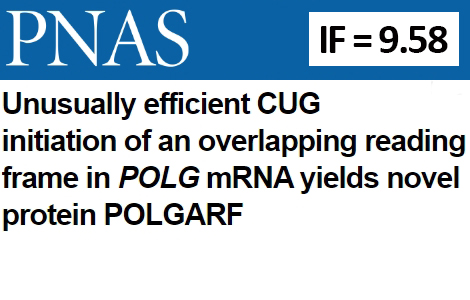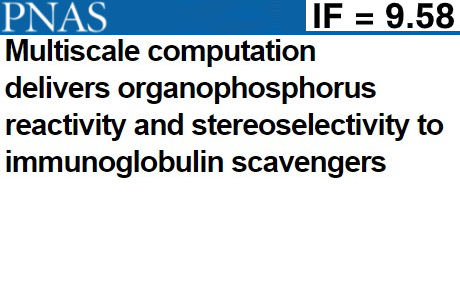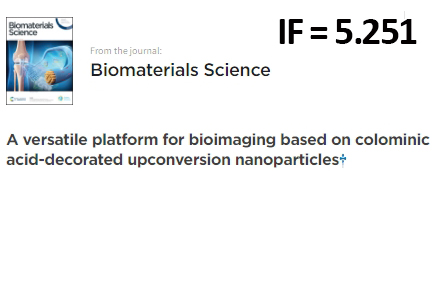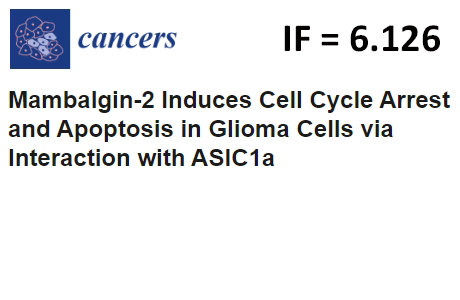Press-room / Digest

Discovery of the novel protein encoded in mammalian mitochondrial DNA polymerase gene POLG
Researchers from Laboratory of bioinformatics approaches in combinatorial chemistry and biology and Laboratory of high-performance screening of biological objects together with colleagues from Moscow State University and University College Cork (Ireland) discovered novel protein POLGARF, which is encoded in alternative reading frame of mitochondrial DNA polymerase POLG mRNA. The results of this study are published in PNAS. Learn more

Multiscale computation delivers organophosphorus reactivity and stereoselectivity to immunoglobulin scavengers
The scientists from the Laboratory of biocatalysis, the Laboratory of proteolytic enzyme chemistry, the Laboratory of bioinformatics approaches in combinatorial chemistry and biology and the Laboratory of hormonal regulation proteins, together with colleagues from EMBL-Hamburg, Moscow State University. M.V. Lomonosov, the Sheffield Institute and the Scripps Research Institute have developed a universal algorithm that makes it possible to create biological antidotes based on biocatalysts, directionally increasing their reactivity, and to predict stereoselectivity. The work was published in the journal Proceedings of the National Academy of Sciences. Learn more

The discovery of four genes of the Noggin family in lampreys is consistent with the hypothesis of two rounds of genomic duplications in vertebrate ancestors
Researchers from the Laboratory of Molecular Bases of Embryogenesis, together with a colleague from the Severtsov Institute of Ecology and Evolution, described for the first time four genes of the Noggin family in the oldest representatives of vertebrates - lampreys, and compared their structure, expression and some functional features with those of the known genes of this family in other vertebrates. As a result, it was concluded that the entire set of the data obtained is in the best agreement with the hypothesis of two successive rounds of duplications of the ancestral genome of invertebrates that occurred at the earliest stage of vertebrate evolution. The work was published in the new journal of Nature Publishing Group - Communications Biology. Learn more

A versatile platform for bioimaging based on colominic acid-decorated upconversion nanoparticles
An advanced noninvasive method for bioimaging lesion is fluorescence diagnostics using nanoparticles. Lanthanide-doped upconversion nanoparticles (UCNPs) are promising bioimaging agents that emit light under near infra-red excitation, capable of deep penetrating in biotissues with a high signal-to-noise ratio. However, their successful implementation is principally associated with surface functionalization with biopolymers. Scientists from the Shemyakin-Ovchinnikov Institute of Bioorganic Chemistry, Federal Scientific Research Centre “Crystallography and Photonics”, FSBSI “N.N. Blokhin Russian Cancer Research Center”, Lomonosov Moscow State University of Fine Chemical Technologies and Sechenov First Moscow State Medical University developed a method for the UCNP surface functionalization with endogenous colominic acid conferring “stealth” properties, which led to effective accumulation in the area of inflammation, as well as micro- and macro-blood vessels visualization. The research was published in the journal Biomaterials Science. Learn more

Toxin from black mamba venom inhibits growth of glioma cells selectively expressing ASIC1a channels
The researchers from the IBCh RAS together with the collaborators from the Institute of Cytology RAS demonstrated for the first time the expression of functionally active ASIC1a channels in U251 MG and A172 gliomas cells, but not in normal astrocytes. A recombinant analogue of mambalgin-2 from black mamba venom was used to suppress the cation influx through ASIC1a channels in glioma cells. As it turned out, mambalgin-2 inhibits the growth of gliomas with EC 50 in the nanomolar range, while not affecting the proliferation of normal astrocytes. Mutant variants of mambalgin-2 with impaired affinity for ASIC1a did not affect the proliferation of glioma cells. It was shown that the decrease in the growth of gliomas cells using mambalgin-2 is associated with the cell cycle arrest, inhibition of phosphorylation of cyclin D1 and cyclin-dependent kinases, and apoptosis induction. The study was published in the Cancers journal under support of the Russian Foundation for Basic Research. Learn more

